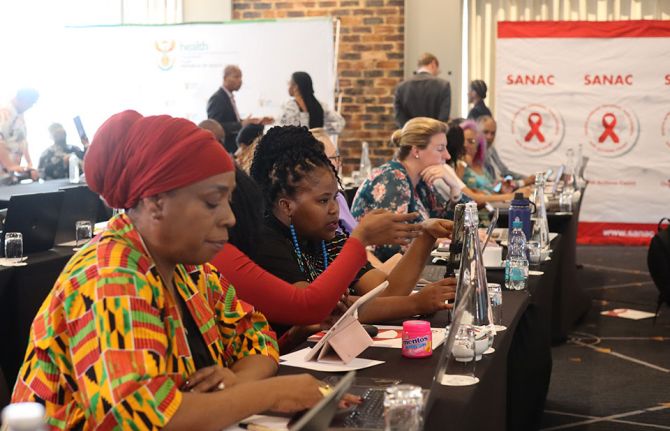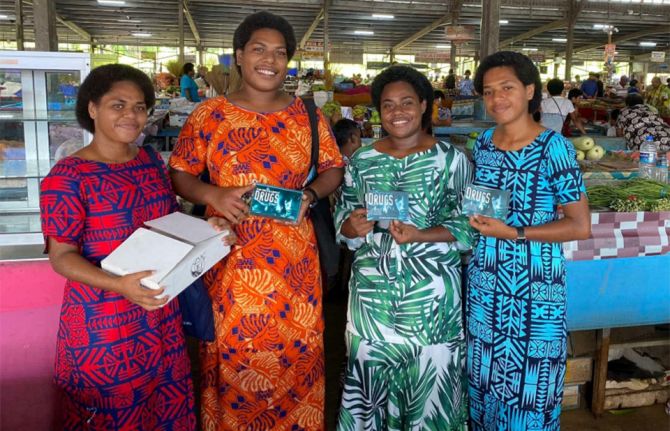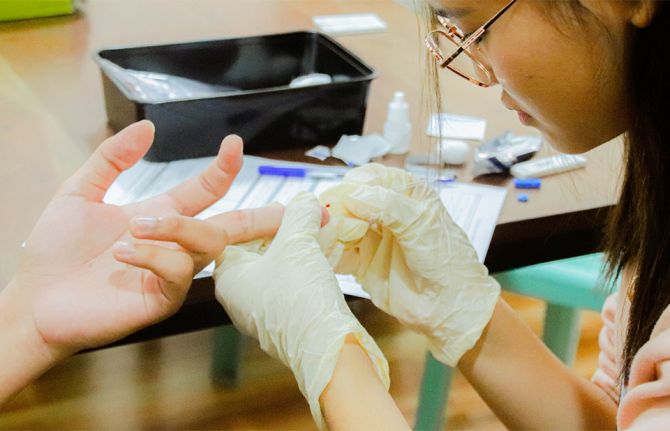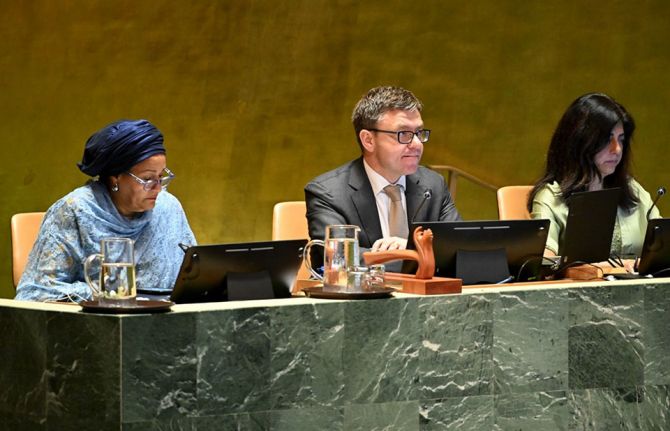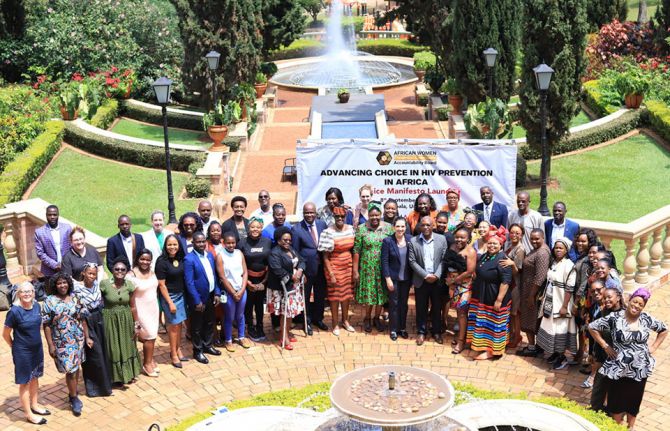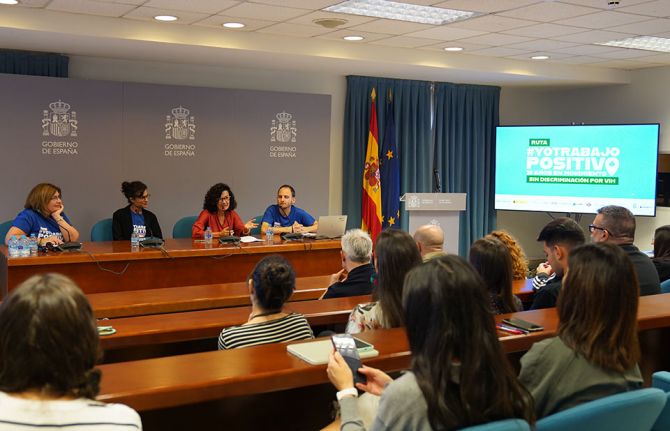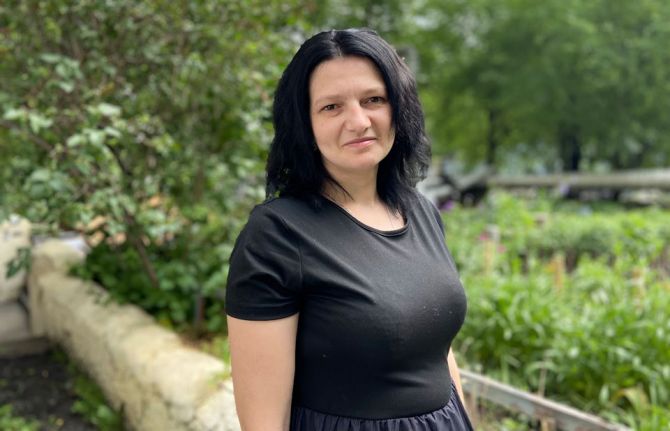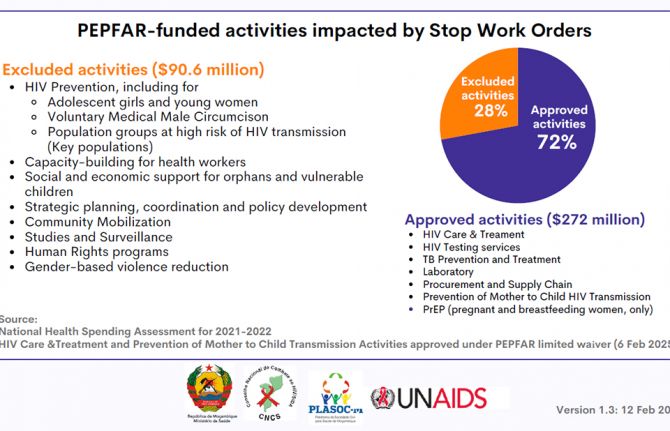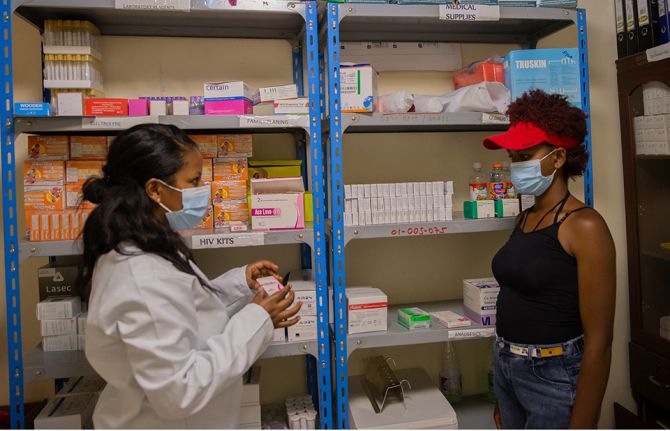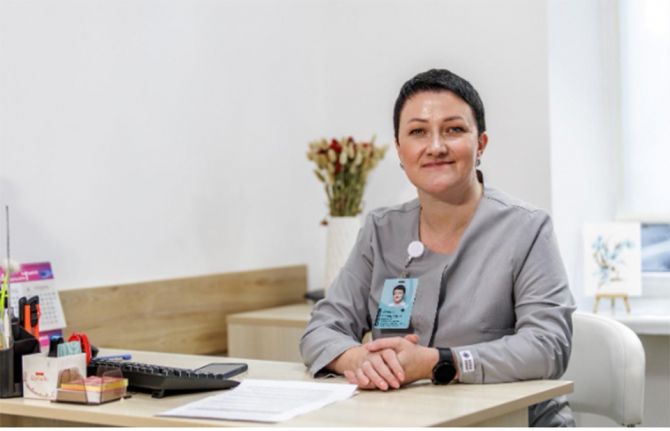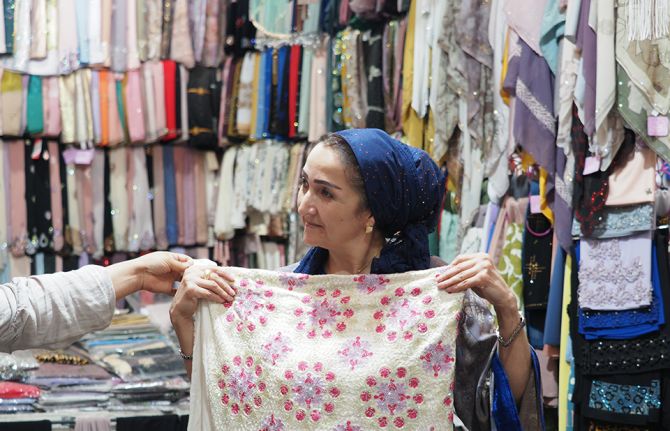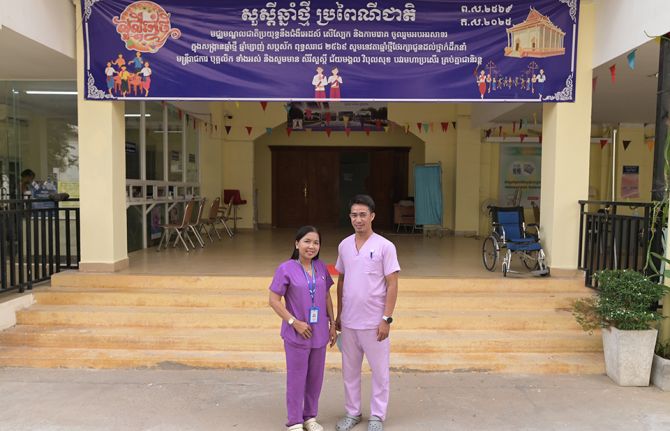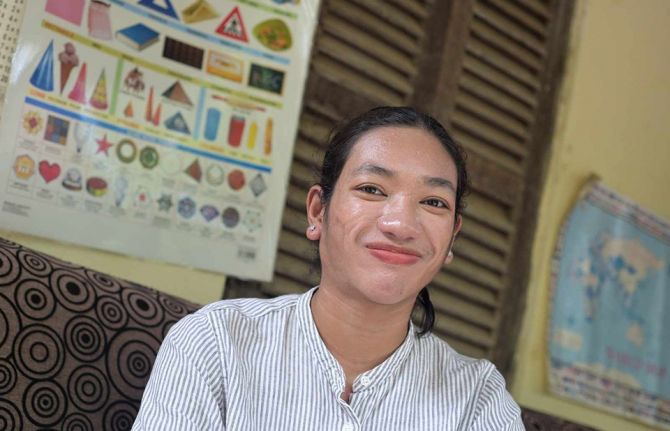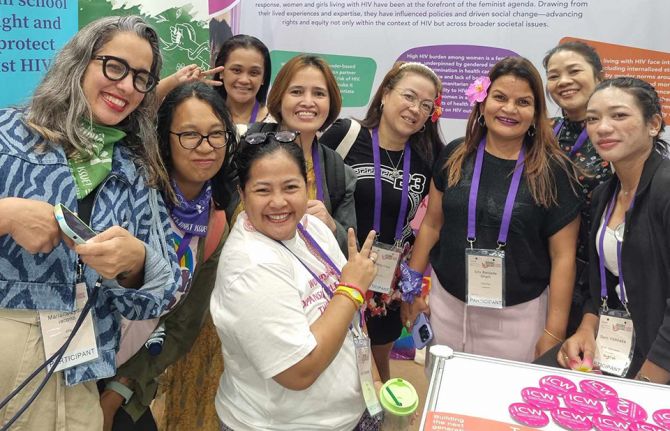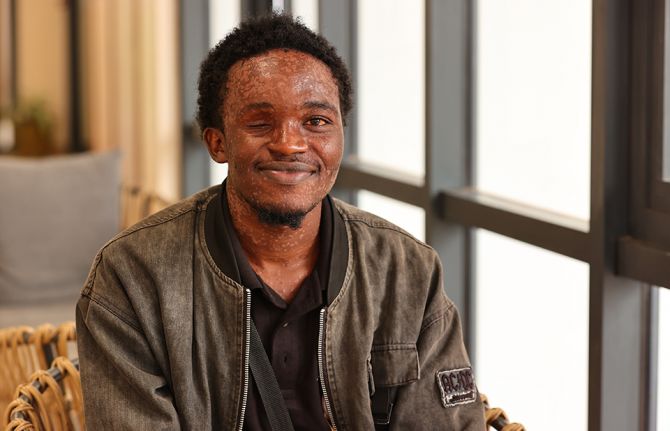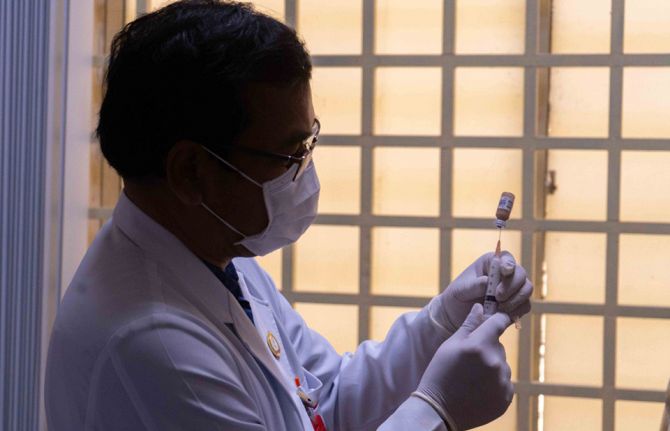
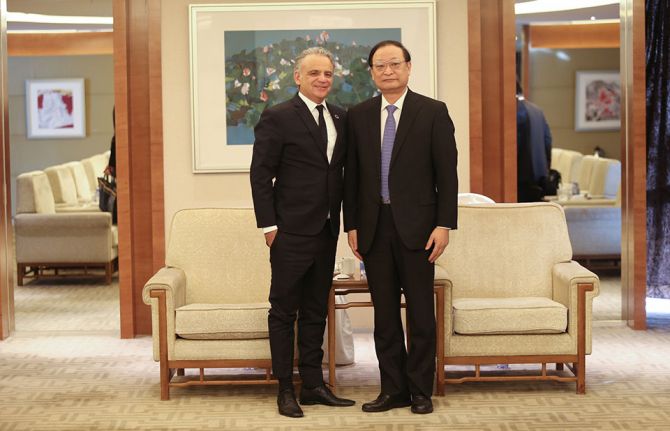
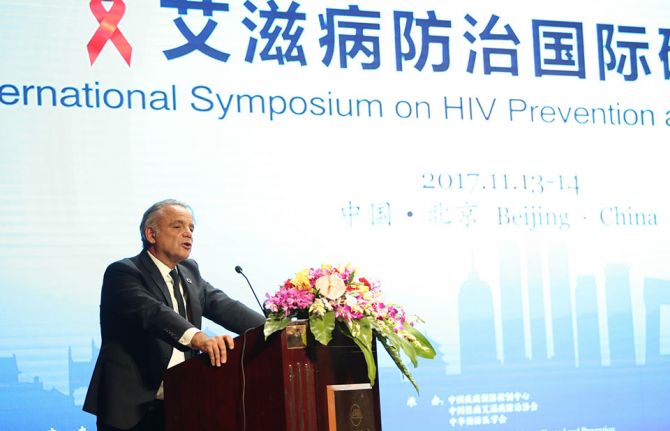
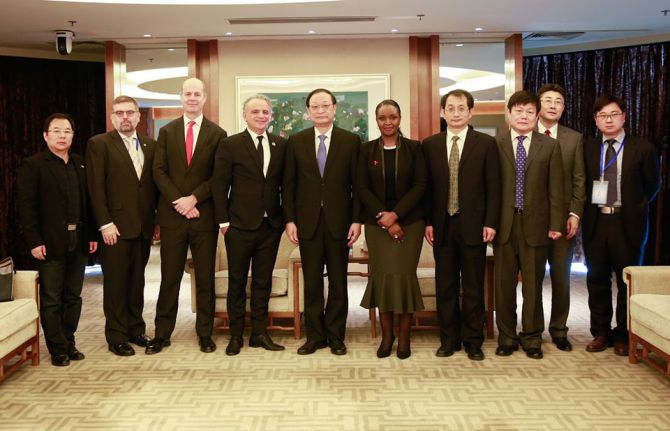
Update
China focuses on strengthening HIV prevention
16 November 2017
16 November 2017 16 November 2017The International Symposium on the Prevention and Control of HIV in China was held in Beijing, China, on 13 and 14 November to discuss China’s evolving HIV epidemic. The symposium was sponsored by China’s National Health and Family Planning Commission and the Ministry of Science and Technology, with the support of UNAIDS, the World Health Organization and the United States Centers for Disease Control and Prevention.
The meeting aimed to put forward new strategies for preventing HIV through sexual transmission. Wang Guoqiang, Vice-Minister of the Chinese National Health and Family Planning Commission, opened the meeting by underlining China’s commitment to HIV prevention. Luiz Loures, UNAIDS Deputy Executive Director, commended China for its political commitment to the HIV response and for innovations that include a unique platform for financing civil society organizations to support prevention efforts.
In the early 2000s, people who inject drugs were at the highest risk of HIV in the country, but a harm reduction programme that started in 2006 rapidly expanded opioid substitution therapy. According to the Chinese National Center for AIDS/STD Control and Prevention, China’s free and voluntary opioid substitution therapy programme is now the largest in the world, cumulatively serving about half a million people over the past 10 years. Government data show that HIV prevalence among people who inject drugs has declined to an estimated 6% in 2015 from more than 12% in 2005.
Public health data from China suggest that gay men and other men who have sex with men are emerging as the group most affected by HIV. According to government data, less than half of gay men and other men who have sex with men know their HIV status and consistent condom use in the past six months has remained at around 45% for a number of years. One innovation has been the active role of community-based organizations, which have actively provided services to their peers with the support of local hospitals. However, other interventions that studies have found to be effective, such as the use of self-testing and pre-exposure prophylaxis, are still at the research stage in China.
The participants of the symposium presented the Chinese government with preliminary recommendations on how to strengthen HIV prevention and control in China, which include shifting the focus to a stratified 90–90–90 target. The recommendations also include increasing resources to community groups and moving forward more aggressively beyond effectiveness and efficacy studies to large implementation and cost-effectiveness studies. Removing institutionalized stigma and discrimination, particularly in health-care settings, was emphasized as a vital component of success.
Quotes
“The Government of China takes seriously the issue of HIV prevention. The policy of the government is prevention first, driven by the law and the full use of new technology, science and innovation.”
“China has made huge progress in responding to and controlling the spread of HIV. However, we are still facing daunting challenges and we commit to working with UNAIDS in the Global Prevention Coalition to address our own challenges as well as contribute China’s lessons to the world.”
“The HIV epidemic among gay men and other men who have sex with men is not only a challenge for China, it is a challenge for the world. China has demonstrated that solidarity with communities and key populations, preventing discrimination and adopting science and innovation will be the key factors for success.”
Region/country



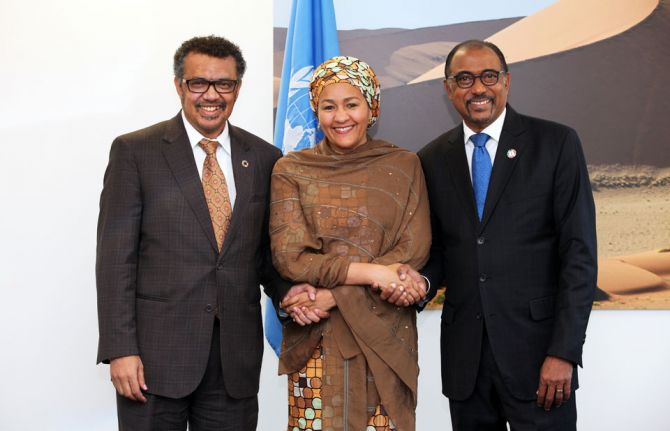
Update
United Nations Deputy Secretary-General and Geneva-based leaders discuss the future of global health in 2030 Agenda
15 November 2017
15 November 2017 15 November 2017What do we need to do differently to reach the ambitious health-related targets in the 2030 Agenda for Sustainable Development? This was the question at the heart of a dynamic exchange of views between United Nations Deputy Secretary-General Amina Mohammed and Geneva-based global health leaders on realizing the vision of health in the 2030 Agenda.
The event was hosted by Tedros Adhanom Ghebreyesus, Director-General of the World Health Organization, and Michel Sidibé, Executive Director of UNAIDS, and was chaired by Valentin Zellweger, Permanent Representative of Switzerland to the United Nations Office and other International Organizations in Geneva. Engaging ambassadors, international organizations, civil society and private sector stakeholders based in Geneva, the meeting sought to identify gaps in the global health agenda and generate concrete, shared solutions for accelerating country-level impact.
In her remarks, Ms Mohammed highlighted health as central to sustainable development and challenged the participants to identify how health can be a guiding light and integrative force for action across the 2030 Agenda. She emphasized the need for more robust data to better understand current health trends and bring programmes to scale.
Ms Mohammed further called for a mapping of the determinants of health to demonstrate to political leaders the urgent need for stronger multisectoral action. She urged participants to consider how health can showcase collective action and results in the context of United Nations reform.
The Sustainable Development Goals (SDGs) have vastly expanded the health agenda, bringing to the fore a range of issues that account for a significant burden of morbidity and mortality, but have not yet been embraced as global health priorities. The participants drew attention to a number of SDG targets that continue to have inadequate political commitment and investment, such as those on mental health, noncommunicable diseases, antimicrobial resistance, air pollution, violence against women and the health of migrants.
During the event, the participants provided a number of proposals on leveraging the unique capacity of Geneva-based institutions, including incubating partnerships on peace, health and trade, building on human rights expertise to address the social determinants of health, encouraging the engagement of ministers beyond health in global health discussions and influencing the global funding architecture to support community-driven solutions and responses.
The participants emphasized the potential for global health to be a forerunner in United Nations reform and to bring new ways of working across the agenda for country-level impact.
Quotes
“The Secretary-General and I place great emphasis on prevention. Investing in prevention to keep people healthy will bring the largest dividend. To do that means addressing social determinants with a myriad of stakeholders in politics, education, trade, civil society, the investor community and beyond.”
“Not only is Geneva the capital of global health, with its critical mass of technical expertise, it also embodies the spirit of collective action, where stakeholders, including international agencies, Member States, civil society, academia and the private sector, can forge innovative partnerships to deliver results for people.”
“Achieving the Sustainable Development Goals is about speed, scale and quality. Are we moving fast enough? Are our efforts and investments ambitious enough? And are we delivering quality health services for all? But above all, the 2030 Agenda for Sustainable Development is a political document. Universal health coverage is a political choice. As technical agencies, we must strengthen our ability to play political roles.”
“Health can be a major entry point for implementing United Nations reform by simplifying and streamlining the health architecture through one inclusive country platform, one implementation plan and one data hub for planning, monitoring and accountability. This will help the United Nations system to be more focused, more aligned and more effective in its support to countries.”
Related


Update
New app helps treatment adherence for people living with HIV
30 October 2017
30 October 2017 30 October 2017A new mobile app for people living with HIV, Life4me+, is now available for free in 156 countries and in six languages—Armenian, English, Estonian, German, Russian and Ukrainian. The app was created by a German–Russian activist living with HIV and his team and aims to simplify medical information and treatment for people living with HIV in eastern Europe and central Asia and beyond.
The app was developed based on the experiences of its developers and HIV activists. For people living with HIV, the app works like a personal electronic patient card. It allows users to stay in touch with doctors online, saving and displaying test results, a calendar of blood tests and a prescription history, and sets up reminders about when to take medication and schedule appointments. There are also functions for recording weight, chest volume, blood pressure, disease history, HIV drug resistance, etc.
It has an interactive map that shows the location of medical centres and nongovernmental organizations supporting people living with HIV, daily HIV-related news and up-to-date information and popular scientific articles on HIV. A help button contains links to hotlines on HIV treatment and prevention and psychological and legal support for women, adolescents and drug users. Currently, the links to the hotlines are available only to people living in some countries in eastern Europe.
With the patient’s permission, doctors can monitor medicine intake and track adherence. The app has special provisions to protect anonymity and confidentiality. All the data are depersonalized, so there is no risk of a person being identified as living with HIV, even if a user’s phone or computer is used by someone else. Life4me+ can be downloaded from Google Play and the Apple App Store.
An updated version of the app will be released on 1 December, which will include functions aimed at preventing new HIV infections, hepatitis C and sexually transmitted infections such as syphilis and gonorrhoea, with automatic reminders to test for those diseases.
Quotes
“New technologies have an essential role in quickening the end of AIDS. The Life4me+ app can be a life-saver for enhancing treatment adherence, which is essential to reaching 90–90–90 by 2020.”
“The world is moving towards e-health. The mobile application Life4me+ is a tool for quality medical care of people living with HIV, especially in eastern Europe and central Asia, where the number of new HIV infections continues to rise.”
“I have lived with HIV for seven years and been on antiretroviral therapy for five years. I've been waiting for an app like this for a long time. I sometimes forgot to take my medicine, but there is a function in the app that reminds me constantly until I say yes. Then I can always see whether I have missed taking my medicine.”
“I actively use the app’s reminders because I sometimes forgot to take my medicine. The app keeps me updated with news about HIV and I keep in touch with my doctor.”
Region/country
- Eastern Europe and Central Asia
- Albania
- Armenia
- Azerbaijan
- Belarus
- Bosnia and Herzegovina
- Bulgaria
- Croatia
- Cyprus
- Czechia
- Estonia
- Georgia
- Hungary
- Kazakhstan
- Kyrgyzstan
- Latvia
- Lithuania
- Montenegro
- Poland
- Republic of Moldova
- Romania
- Russian Federation
- Serbia
- Slovakia
- Slovenia
- Tajikistan
- North Macedonia
- Türkiye
- Turkmenistan
- Ukraine
- Uzbekistan
Related

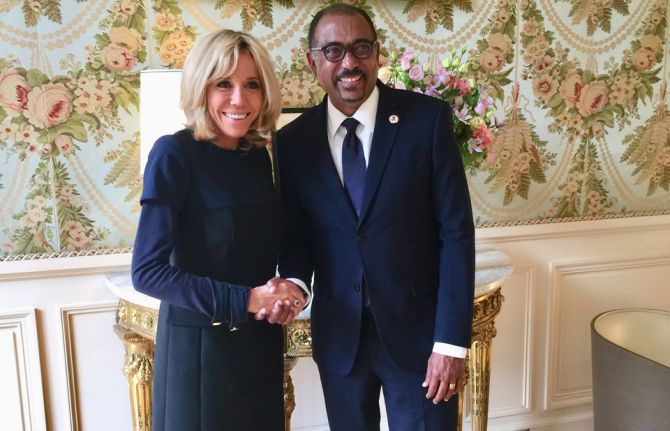
Update
Engaging France's First Lady on education and HIV
25 October 2017
25 October 2017 25 October 2017During a visit to Paris, UNAIDS Executive Director met with France's First Lady at the Elysée Palace to discuss the links between education and HIV.
Mr Sidibé explained that in sub-Saharan Africa, three in four new HIV infections in 15-19 year olds are among girls. And HIV is the third leading cause of death among young women aged 15-29 globally.
The causes vary but lower access to education along with gender inequalities erode women and girls' ability to negotiate safe sex and have control over their bodies. In addition, most young people lack the knowledge to protect themselves from HIV. In sub-Saharan Africa, surveys from 35 countries showed that only 36% of young men and 30% of young women correctly identified the ways of preventing the sexual transmission of HIV.
Mr Sidibé stressed that when girls stay in school they are less vulnerable to HIV. He also emphasized that age-appropriate comprehensive sex education for girls and boys is a cornerstone to end the AIDS epidemic.
Acknowledging Mrs Macron's vast experience in education as a teacher and educator, Mr Sidibé offered support to organize an event on girls’ education on the sidelines of the Dakar financing conference of the Global Partnership for Education in February 2018. Senegal and France are co-hosting the event to raise funds for teachers' trainings and to promote scientific and computer education in schools.
UNAIDS has invited the First Lady of France at its Geneva headquarters in the coming year and to join the First Ladies of Africa at next year's General Assembly in New York.
Quotes
"It is key to strengthen synergies between education and the HIV response including through comprehensive sexuality education. France's leadership is as necessary as ever to end the AIDS epidemic by 2030."
Region/country
Related
 Government ensures continuity of treatment in Malawi
Government ensures continuity of treatment in Malawi

10 February 2025


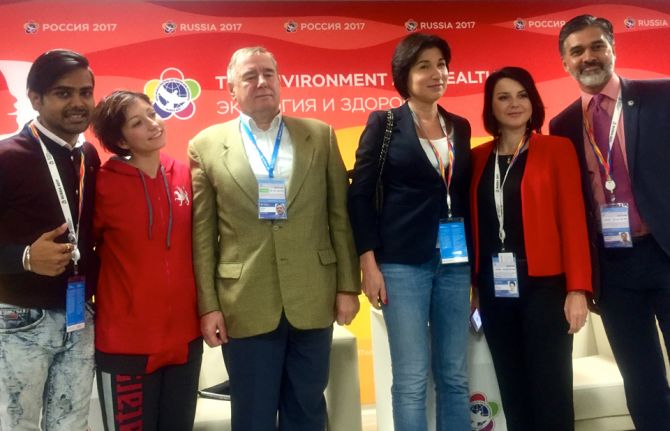
Update
Young people rally to end AIDS at the World Festival of Youth and Students
30 October 2017
30 October 2017 30 October 2017From 14 to 21 October, almost 25 000 young people from 188 countries gathered in Sochi, Russian Federation, for the XIX World Festival of Youth and Students. The festival provided a space for young people to unite in addressing global challenges, with a special focus on the Sustainable Development Goals (SDGs).
Through the leadership of the PACT youth coalition against HIV and with support from UNAIDS and participation of UNFPA and UNESCO, the issues of ending AIDS and sexual and reproductive health and rights were high on the agenda.
Three sessions focused on comprehensive sexuality education, modern epidemics and the role of young people in ending AIDS by 2030. The overarching theme of the discussions was that although much progress has been achieved in the response to HIV, there are still persistent challenges that put young people at risk, including discrimination, exclusion, violence and lack of access to services such as comprehensive sexuality education.
Speakers at the comprehensive sexuality education session highlighted that the absence of quality comprehensive sexuality education remains one of the largest gaps in ensuring that young people know how to protect themselves from HIV. Speakers also presented key new products and platforms, including a comprehensive sexuality education hub, teensLIVE.info, a video lesson developed for schoolchildren in eastern Europe and central Asia featuring UNAIDS Goodwill Ambassador Vera Brezhneva and a series of videos by the NauchPok channel.
The PACT youth coalition met with the United Nations Secretary-General’s Envoy on Youth, Jayathma Wickramanayake, who said, “I am looking forward to working with all of you through UNAIDS and other partners. My goal is to ensure that young people have a voice in all United Nations processes and to help them address issues that are relevant to them and their communities, including those issues that may be perceived as sensitive or challenging.”
Lack of access to information on HIV leads to new HIV infections and sustains the root causes that put young people at risk, including inequality, discrimination, violence and exclusion. Dilyara Vagapova, from the Russian rock group Murakami, said, “Without open conversations with young people about HIV, sex and the harm done by drugs, we will not succeed in ending the HIV epidemic in eastern Europe and central Asia.”
To ensure that the targets in the 2016 United Nations Political Declaration on Ending AIDS are met, accountability is key. Young leaders from Bulgaria, India, South Africa, Tajikistan, Ukraine and the United Kingdom of Great Britain and Northern Ireland shared best practices in peer education and youth-led accountability for the SDGs and the HIV response. Yana Mladenova from Bulgaria, said, “A policy on paper is not the same as a policy in practice. Successful advocacy results in action in practice.” Yana Valchuk, from the Teenergizer adolescent network, said, “To end the epidemic, we need to end discrimination, so adolescents stop living in fear.”
Vinay P. Saldanha, the UNAIDS Regional Director for Eastern Europe and Central Asia, spoke at several sessions. “Achieving the Sustainable Development Goals, including ending AIDS by 2030, does not depend on those that negotiated them. It depends on the personal commitment of each young person at this festival. This is your world—these are your goals!,” he said.
Region/country
Related


Update
New fund for key populations in eastern Europe and central Asia
10 October 2017
10 October 2017 10 October 2017The Elton John AIDS Foundation announced on 10 October a new funding initiative for key populations in eastern Europe and central Asia.
The Key Populations Fund for Eastern Europe and Central Asia will focus on prevention and treatment of both HIV and hepatitis C for the people in the region most vulnerable to HIV—people who inject drugs, gay men and other men who have sex with men and sex workers. Over the next three years, the fund will aim to reach 20 000 people in the region with prevention, testing and treatment services.
People who inject drugs, gay men and other men who have sex with men and sex workers remain disproportionately affected by HIV in eastern Europe and central Asia as they are beyond the reach of many prevention and treatment services. They make up the majority of people living with HIV in the region.
Eastern Europe and central Asia is the only region of the world where both new HIV infections and AIDS-related deaths are rising. New HIV infections have increased by 60% and AIDS-related deaths by 38% since 2010. Only 27% of people living with HIV in the region had access to life-saving antiretroviral therapy in 2016.
Quotes
“This timely initiative by the Elton John AIDS Foundation focuses on the right people in the right region: key populations in eastern Europe and central Asia.”
Region/country
- Eastern Europe and Central Asia
- Albania
- Armenia
- Azerbaijan
- Belarus
- Bosnia and Herzegovina
- Bulgaria
- Croatia
- Cyprus
- Czechia
- Estonia
- Georgia
- Hungary
- Kazakhstan
- Kyrgyzstan
- Latvia
- Lithuania
- Montenegro
- Poland
- Republic of Moldova
- Romania
- Russian Federation
- Serbia
- Slovakia
- Slovenia
- Tajikistan
- North Macedonia
- Türkiye
- Turkmenistan
- Ukraine
- Uzbekistan
Related


Update
ILO’S VCT@WORK has reached 6 million workers
17 October 2017
17 October 2017 17 October 2017A new report published by the International Labour Organization (ILO), VCT@WORK: voluntary confidential counselling and HIV testing for workers, shows that the VCT@WORK campaign has reached more than 6 million workers with HIV information, tested more than 4 million and referred more than 100 000 to HIV treatment. Launched in 2013, VCT@WORK is an initiative of ILO, UNAIDS and partners to scale up HIV testing, specifically in the workplace.
The VCT@WORK initiative has had particular success in reaching men, a group that is hard to reach with HIV services, with men accounting for more than 60% of people tested for HIV and 80% of people referred to treatment through the initiative in 2016.
The campaign reached 18 countries in 2016, and focuses on populations at higher risk of HIV infection, including workers in the mining, transport, construction, health and tourism sectors. Mobile and migrant workers are also often the focus of VCT@WORK HIV testing programmes, and in concentrated epidemics the focus is on key populations.
Workers in Kenya are among the people to have been reached by the campaign. A partnership between ILO, the Central Organization of Trade Unions in Kenya and other partners has enabled trucker drivers to access HIV testing and counselling services along the Mombasa to Busia transport corridor. Truck drivers face challenges in accessing health services, owing to their mobility and irregular schedules, so being able to test for HIV while at work will allow many more to find out their HIV status in order to start life-saving treatment or to access HIV prevention services to keep them HIV-free.
Hair and beauty salon workers in Kenya and workers in the informal economy are among the 74 000 people who have taken HIV tests through the VCT@WORK initiative in the country, with more than 1000 people who found out their HIV-positive status being linked to treatment.
Coal India Limited is the largest public sector coal company in India, with around 314 000 employees plus a large number of contractual workers. A long-standing partner of ILO’s HIV workplace programme, it is now a lead company in the VCT@WORK initiative in the country. Its HIV strategy, developed as part of VCT@WORK, includes training master trainers and peer educators to promote voluntary HIV testing, engaging unions to mobilize workers to seek HIV information and testing and covering contractual workers and their families in the strategy. More than 36 000 workers, dependents and contractual workers have accessed HIV counselling and testing services under the initiative.
These and other VCT@WORK programmes around the world are helping build momentum towards meeting the 90–90–90 targets, whereby, by 2020, 90% of people living with HIV know their HIV status, 90% of people who know their HIV-positive status are accessing treatment and 90% of people on treatment have suppressed viral loads.
Quotes
“The VCT@WORK initiative is a great innovation to reach people with HIV services at work, widening access to HIV testing for people at a time and place convenient for them.”
“Men have not been reached effectively in the AIDS response. VCT@WORK is an important step to change that. Under this programme, nearly 70% of men took an HIV test—compared to 30% of women. This clearly shows that the workplace is key to effectively expanding HIV services to those who are not adequately covered.”
Related

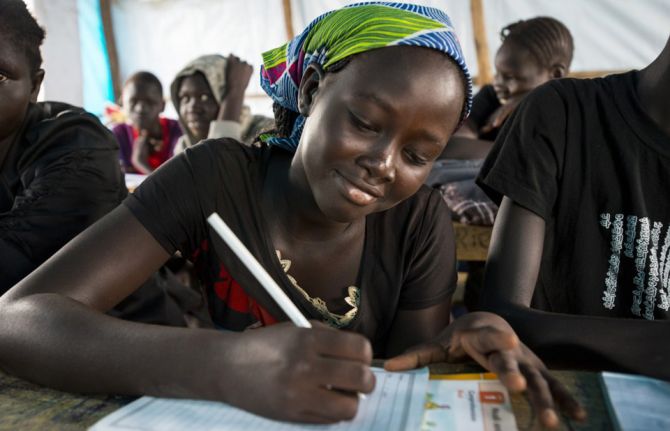
Update
International Day of the Girl Child: empowering girls before, during and after crises
11 October 2017
11 October 2017 11 October 2017The International Day of the Girl Child, marked every year on 11 October, highlights and addresses the needs and challenges that girls face, while promoting their empowerment and human rights.
In many parts of the world, one of the key challenges that adolescent girls face is HIV. Globally, every week 6900 adolescent girls and young women aged 15–24 years are newly infected with HIV, yet only one in three adolescent girls and young women have comprehensive and correct knowledge of how to prevent HIV. In sub-Saharan Africa, three in four new HIV infections among 15–19-year-olds are among girls.
The theme of the International Day of the Girl Child 2017 is “EmPOWER girls: before, during and after crises”. War and conflict exacerbate the vulnerability of girls to child marriage, intensify inequality and make women and girls susceptible to both household and intimate partner violence, all of which increase the vulnerability of women and girls to HIV.
Women who experience intimate partner violence can be 50% more likely to acquire HIV than those who do not experience such violence. And adolescent girls are more vulnerable to intimate partner violence—in 22 of 32 countries with available data, young women experienced more recent intimate partner violence than older women.
International human rights obligations and the bold targets of the 2016 United Nations Political Declaration on Ending AIDS call for ending all forms of violence against women and girls, including in conflict, post-conflict and humanitarian settings. Only through promoting gender equality, eliminating violence and investing in girls empowerment together with the other targets in the Political Declaration will the world be on track to ending the AIDS epidemic by 2030.
Quotes
“Violence against women and girls is a stain on our social fabric. On the International Day of the Girl Child, I call for countries to honour their commitment to end all violence against women and girls.”
Campaign

Update
UNAIDS urges United Republic of Tanzania to implement HIV Prevention 2020 Road Map
19 October 2017
19 October 2017 19 October 2017In the United Republic of Tanzania, new HIV infections declined by 18% between 2010 and 2016, falling to an estimated 55 000 new HIV infections in 2016. While this is steady progress, the country needs to do more to stop new HIV infections, particularly among adolescent girls and young women, who accounted for an estimated 18 000 new HIV infections in 2016, and among populations at higher risk of HIV. In 2016, there were more AIDS-related deaths among adult men than women, pointing to the need to reach men with HIV testing and treatment services.
During a visit to mainland Tanzania and Zanzibar, the Executive Director of UNAIDS, Michel Sidibé, called on the government and civil society to spearhead the implementation of the recently launched HIV Prevention 2020 Road Map. If implemented, the road map will Fast-Track progress to reduce new HIV infections globally by 75%—from 2.2 million in 2010 to 500 000 by 2020.
During his visit, Mr Sidibé met with the President of Zanzibar as well as a number of ministers and senior government officials in both mainland Tanzania and Zanzibar. He congratulated the United Republic of Tanzania on its commitment to achieve the Fast-Track Targets by 2020. He added that in order to reach those targets, the United Republic of Tanzania will need to prioritize HIV prevention strategies to dramatically reduce new HIV infections. He emphasized the importance of leaving no one behind in access to health and HIV services, including key and vulnerable populations.
During his meeting with the President of Zanzibar, Ali Mohamed Shein, Mr Sidibé encouraged the President to achieve the elimination of mother-to-child transmission of HIV by 2020, which is well within reach in both mainland Tanzania and Zanzibar.
Mr Sidibé also met with civil society organizations during his visit. Civil society play a critical role in responding to HIV in the United Republic of Tanzania, serving on the board of the national AIDS council and ensuring that the AIDS response is multisectoral, inclusive of people living with HIV and reaches people at higher risk of HIV infection.
Mr Sidibé emphasized civil society’s important role in strengthening community responses to HIV and made a call to ensure that its work is integrated into national HIV responses and adequately funded through domestic and international investments.
On 10 October 2017, UNAIDS, UNFPA and partners launched the HIV prevention 2020 road map as part of efforts to reduce new HIV infections by 75% by 2020.
Quotes
“I am pleased with the progress thus far. HIV infections are being reduced, but we need to sustain the gains. We are committed to the African Union global solidarity and shared responsibility agenda.”
“The challenges to ending AIDS here are similar to those in many other places—being able to reach the people most affected by HIV and ensuring they have access to HIV prevention, testing and treatment services.”
“Being part of the Zanzibar Association of People Living with HIV/AIDS gives me a home to interact with my peers and discuss common challenges, the ability to gain skills and an opportunity to speak on behalf of my community at a high level, both nationally and internationally.”
Region/country

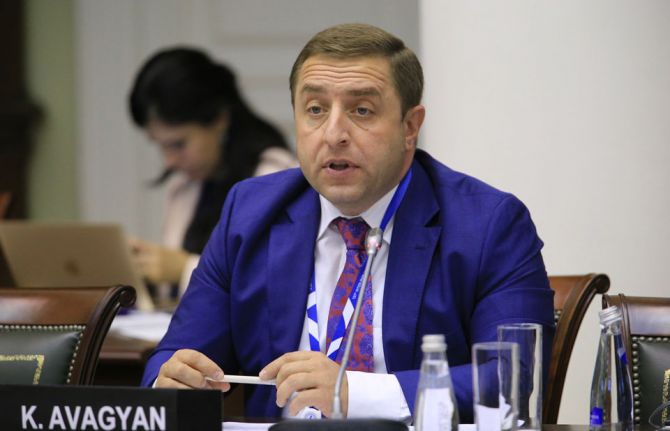
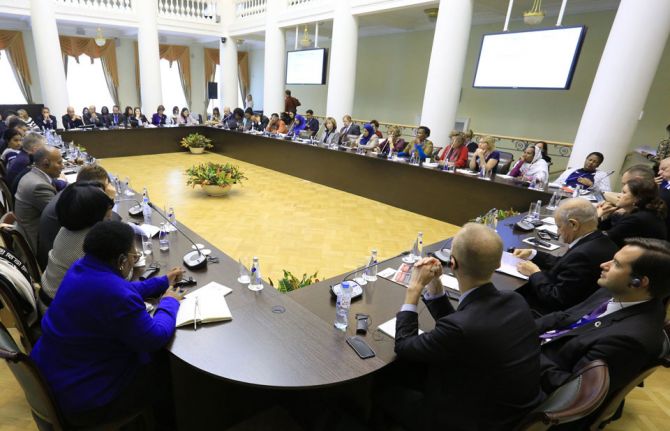

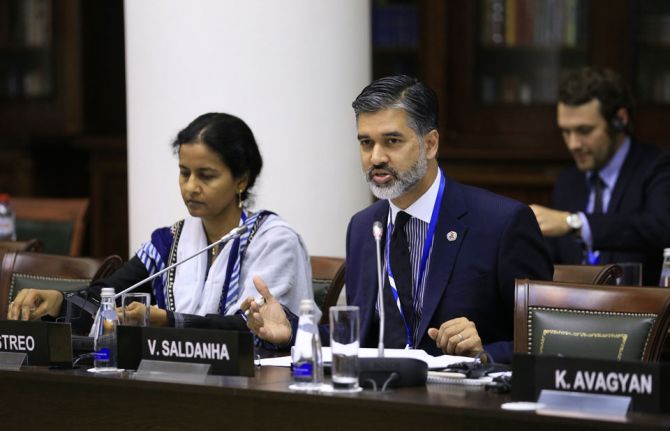
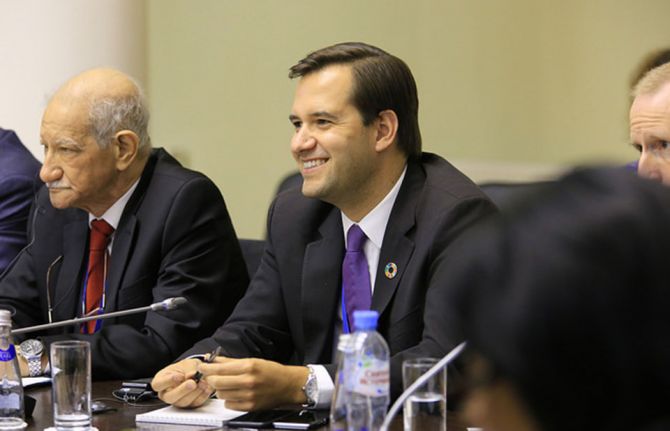

Update
Parliamentarians call for firm action towards ending the AIDS epidemic
18 October 2017
18 October 2017 18 October 2017Members of parliament from countries worldwide called for firm action towards ending the global AIDS epidemic on 15 October in Saint Petersburg, Russian Federation. The members of parliament have gathered in Saint Petersburg for the 137th Assembly of the International Parliamentary Union, which is being held from 14 to 19 October.
The discussion, during a session entitled Ending AIDS through Sexual and Reproductive Health: the Need for Urgent Parliamentary Action, was focused on the rights of key populations, access to treatment, gender equality, addressing cultural barriers and the need for greater investment in the response to HIV.
Members of parliament debated the issues of legal support to HIV prevention and harm reduction initiatives. They put their voices behind creating an enabling legal environment for responding to the epidemic, but stressed the need to tailor the response by focusing on specific issues that vary from country to country and region to region.
Quotes
“We need to stop talking and start acting.”
“Members of parliament are the interface between the people and government and we need local choices to reach the 90–90–90 targets on HV and the Sustainable Development Goals targets on health. It is the lack of political will that is holding us back.”
“The recent lessons from our experience only strengthen our view that punitive measures can only be counterproductive. There must be an open, dialogue-based approach in working with communities and a focus on human rights.”
"Saint Petersburg City AIDS Center is providing a full range of quality services. Its staff are highly professional and show a strong commitment to giving not only the required medical assistance but also guidance, advice and support to their patients, the community of people living with HIV and key populations".
Region/country
Related
 Government ensures continuity of treatment in Malawi
Government ensures continuity of treatment in Malawi

10 February 2025

